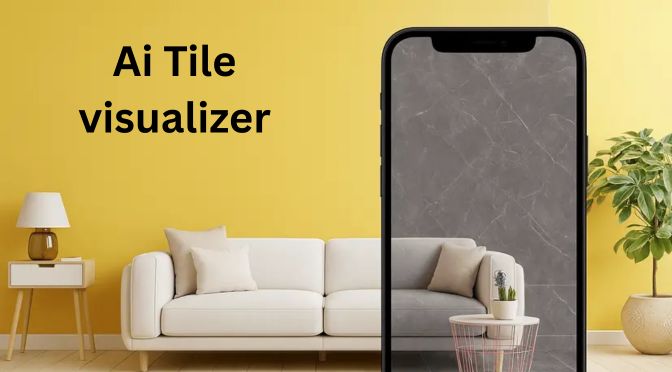Marble Visualiser AI: The Future of Luxury Surface Selection
In the world of architecture and interior design, technology has steadily blurred the line between imagination and reality. What once required physical samples and countless showroom visits can now be explored digitally with incredible precision. With platforms like Marble Visualiser AI, clients, designers, and architects are experiencing an entirely new way to envision marble surfaces in their projects—faster, more accurately, and more creatively than ever before.
Imagine seeing how a rare Italian marble will look as a kitchen countertop, or how a bold black stone will transform an entire lobby wall, all before a single slab is cut. This is where innovation meets luxury, reshaping how we select, compare, and finalize surfaces.
The Rise of Digital Surface Selection
For decades, the process of choosing marble was tactile. Clients would physically touch slabs, study veins under changing light, and compare patterns from one quarry batch to another. While this tradition carried its own charm, it also came with limitations:
- Limited access to global varieties.
- High costs of importing samples.
- Difficulty visualizing large-scale installations.
- Time-consuming showroom visits.
Digital visualization tools have redefined this experience. With high-resolution rendering and machine learning algorithms, AI-powered platforms allow clients to “try on” marble surfaces just like trying clothes online.
How Marble Visualiser AI Works
At its core, this innovation merges artificial intelligence with 3D rendering. Here’s a breakdown:
- Image Input: Users upload photographs or select from templates of kitchens, bathrooms, living rooms, or commercial spaces.
- Material Simulation: The AI overlays chosen marble textures onto surfaces with photo-realistic precision.
- Real-Time Adjustments: Lighting, angle, and scale can be altered to show how the surface will actually look.
- Smart Recommendations: Based on preferences, the system suggests similar materials that complement the space.
The beauty lies in speed. What once took weeks of decision-making can now be explored in minutes.
Why Marble Visualiser AI is a Game-Changer
1. Precision Beyond Samples
A handheld sample cannot convey the grandeur of a full wall or floor. AI-powered visualization provides a holistic view, helping clients avoid costly misjudgments.
2. Global Access to Designs
Instead of being restricted to local showrooms, users can explore exotic marbles from across the globe—virtually.
3. Sustainability Advantage
By reducing the need for physical samples and unnecessary shipments, it minimizes waste and lowers environmental impact.
4. Faster Client Decisions
Interior designers no longer need endless mood boards. Clients can instantly visualize surfaces and approve them with confidence.
Marble Visualiser AI for Luxury Interiors
Luxury design thrives on detail, and marble has always been its crown jewel. Whether it’s the pristine elegance of Carrara or the dramatic veining of Calacatta Oro, visualization elevates the entire design journey.
Residential Spaces
- Kitchens: Preview countertops and backsplashes to see if bold veins overpower or enhance the space.
- Bathrooms: Test how white marble creates serenity or how dark tones add drama.
- Living Rooms: Virtually install marble floors to balance aesthetics with comfort.
Commercial Spaces
- Hotels: Visualize lobby grandeur before construction begins.
- Offices: Compare sleek, modern finishes against warm, natural patterns.
- Retail Stores: Experiment with unique textures to create luxury brand identity.
Balancing Style and Functionality
One of the greatest advantages of Marble Visualiser AI is that it goes beyond looks. It factors in practicality:
- Durability Simulations: Demonstrates how certain marbles age over time in high-traffic areas.
- Maintenance Insights: Predicts cleaning and upkeep challenges associated with specific textures.
- Cost Estimations: Many tools integrate budgeting features, allowing real-time financial planning.
The Designer’s Perspective
For interior designers, this technology bridges creativity and client expectations. Instead of explaining with sketches or 2D drawings, they can present immersive visuals that mirror reality. It eliminates miscommunication and builds trust.
Moreover, AI tools encourage experimentation. Designers can try unconventional combinations—like pairing black marble floors with green accent walls—without the fear of making costly mistakes.
Challenges in Traditional Marble Selection
To truly appreciate innovation, it’s worth noting the hurdles of the old system:
- Color Variability: Natural stone often varies significantly from one slab to another.
- Time Constraints: Busy clients struggled to visit multiple warehouses.
- Lack of Scale: Small samples rarely showed true veining or patterns.
By addressing these issues, Marble Visualiser AI redefines efficiency in luxury design.
Future Possibilities of Marble Visualisation
Technology rarely stays still. With ongoing AI advancements, here’s what the future holds:
- Augmented Reality (AR): Imagine standing in your living room and projecting different marbles onto the floor in real time using your phone.
- Virtual Reality (VR): Full immersive walkthroughs before construction even begins.
- AI Personalization: Platforms may predict your design preferences based on past selections and recommend tailored surfaces.
- Integration with Smart Homes: Visualizations could adapt to changing lighting conditions within your actual space.
Choosing the Right Platform
Not all visualization tools are created equal. When selecting one, consider:
- Image Accuracy: Look for platforms with high-resolution rendering.
- Ease of Use: User-friendly interfaces save time and frustration.
- Variety of Options: The more global stone libraries included, the better.
- Cross-Device Access: Compatibility with mobiles, tablets, and desktops ensures flexibility.
Sustainability and Ethical Luxury
In an age of conscious living, luxury no longer stands apart from responsibility. Marble Visualiser AI contributes to sustainability by reducing unnecessary quarrying, transport, and waste. Designers can showcase options digitally, ensuring only confirmed materials are sourced.
This aligns perfectly with the ethos of modern luxury—where timeless beauty coexists with ethical choices.
Final Thoughts on Marble Visualiser AI
The journey from quarry to installation has been transformed by digital intelligence. By blending accuracy, sustainability, and creative freedom, Marble Visualiser AI is shaping the future of luxury surface selection. It allows homeowners and designers to explore endless possibilities, ensuring that every space becomes a true reflection of style, function, and personal taste.
FAQs
What types of finishes are available for stone surfaces?
Polished, honed, leathered, and brushed finishes are among the most common, each offering a distinct texture and look.
How can I protect natural stone surfaces from stains?
Applying a high-quality sealant and cleaning spills quickly are effective ways to prevent staining.
What is the difference between engineered stone and natural stone?
Natural stone is quarried directly, while engineered stone is man-made using quartz and resins for consistency and durability.
Do all marbles require the same maintenance?
No, some varieties are more porous and require frequent sealing, while denser stones need less upkeep.
Can stone surfaces handle heat well?
Most natural stones are heat resistant, but it’s always advisable to use trivets or pads to prevent thermal shock.
Is marble suitable for outdoor spaces?
Certain types work well outdoors, though exposure to weather may cause fading or erosion over time.
How do I choose between granite and marble?
Granite is more durable and stain-resistant, while marble offers unique veining and elegance—choice depends on lifestyle.
What factors affect the price of natural stone?
Rarity, quarry location, transportation, and finishing process all play major roles in pricing.
Can I mix different stone types in one project?
Yes, combining stones can create striking contrasts, provided the tones and finishes complement each other.
How do I clean stone surfaces daily?
Mild soap and water are usually enough; avoid harsh chemicals that may damage the surface.













